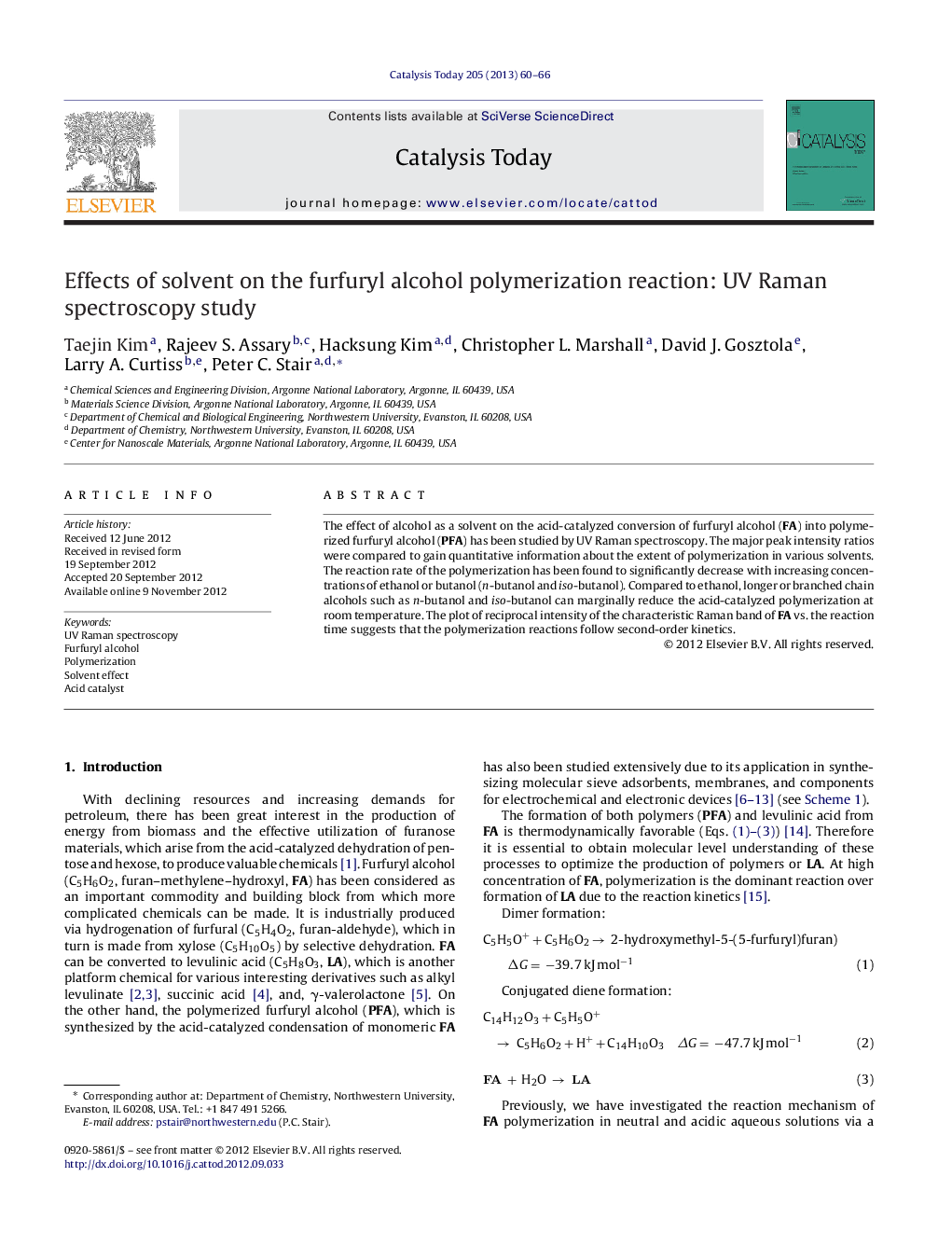| Article ID | Journal | Published Year | Pages | File Type |
|---|---|---|---|---|
| 54929 | Catalysis Today | 2013 | 7 Pages |
The effect of alcohol as a solvent on the acid-catalyzed conversion of furfuryl alcohol (FA) into polymerized furfuryl alcohol (PFA) has been studied by UV Raman spectroscopy. The major peak intensity ratios were compared to gain quantitative information about the extent of polymerization in various solvents. The reaction rate of the polymerization has been found to significantly decrease with increasing concentrations of ethanol or butanol (n-butanol and iso-butanol). Compared to ethanol, longer or branched chain alcohols such as n-butanol and iso-butanol can marginally reduce the acid-catalyzed polymerization at room temperature. The plot of reciprocal intensity of the characteristic Raman band of FA vs. the reaction time suggests that the polymerization reactions follow second-order kinetics.
Graphical abstractFigure optionsDownload full-size imageDownload high-quality image (143 K)Download as PowerPoint slideHighlights► The effect of alcohol on the furfuryl alcohol polymerization was studied by UV Raman spectroscopy. ► The furfuryl alcohol polymerization increases with the FA/EtOH molar ratio. ► The linearity of inverse CC band intensity vs. reaction time suggests second-order polymerization kinetics. ► Compared to the ethanol, butanol further reduces the FA polymerization rate due to a shielding effect.
